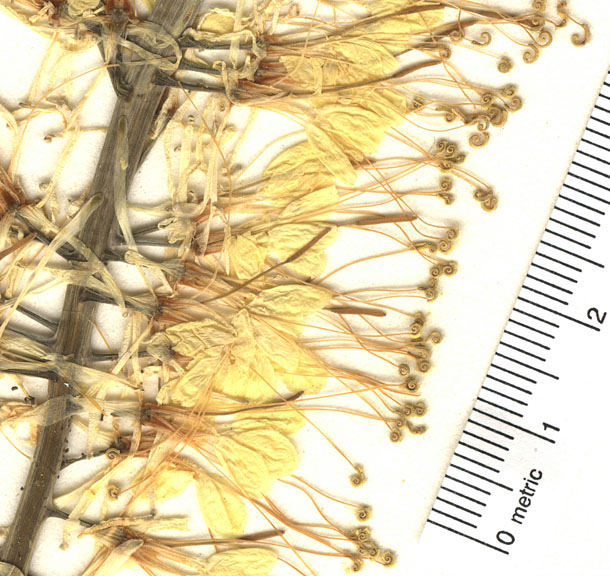Brassicaceae
|
Brassicaceae |
|
|
Herbs or subshrubs [shrubs or, rarely, lianas or trees], annual, biennial, or perennial; usually terrestrial, rarely submerged aquatics; with pungent watery juice; scapose or not; pubescent or glabrous, usually without papillae or tubercles (multicellular glandular papillae or tubercles present in Bunias, Chorispora, and Parrya); taprooted or rhizomatous (rarely stoloniferous), caudex simple or branched, sometimes woody, rhizomes slender or thick. Trichomes unicellular, simple, stalked, or sessile; forked, stellate, dendritic, malpighiaceous (medifixed, 2-fid, appressed), or peltate and scalelike, eglandular. Stems (absent in Idahoa, sometimes Leavenworthia) usually erect, sometimes ascending, descending, prostrate, decumbent, or procumbent; branched or unbranched. Leaves (sometimes persistent) cauline usually present, basal present or not (sometimes rhizomal present in Cardamine), rosulate or not, usually alternate (sometimes opposite or whorled in Cardamine angustata, C. concatenata, and C. diphylla and in Lunaria annua; sometimes subopposite in C. dissecta and C. maxima and in Draba ogilviensis), usually simple, rarely trifoliolate or pinnately, palmately, or bipinnately compound; stipules absent [with tiny, stipulelike glands at base of petioles and pedicels]; petiolate, sessile, or subsessile (sessile auriculate or not, sometimes amplexicaul); blade margins entire, dentate, crenate, sinuate, repand, or dissected. Inflorescences terminal, usually racemose (racemes often corymbose or paniculate) or flowers solitary on pedicels from axils of rosette leaves; bracts usually absent, sometimes present. Pedicels present (persistent or caducous [rarely geotropic]). Flowers bisexual [unisexual], usually actinomorphic (zygomorphic in Iberis, sometimes in Pennellia, Streptanthus, and Teesdalia); perianth and androecium hypogynous; sepals usually caducous, rarely persistent, 4, in 2 decussate pairs (1 pair lateral, 1 median), distinct [connate], not saccate or lateral (inner) pair (or, rarely, both pairs) saccate, forming tubular, campanulate, or urceolate calyx; petals 4, alternate with sepals, usually cruciform, rarely in abaxial and adaxial pairs, rarely rudimentary or absent, claw differentiated or not from blade, blade sometimes reduced and much smaller than well-developed claw, basally unappendaged, or, rarely, ap Duration: Biennial Nativity: Native Lifeform: Subshrub |
|
